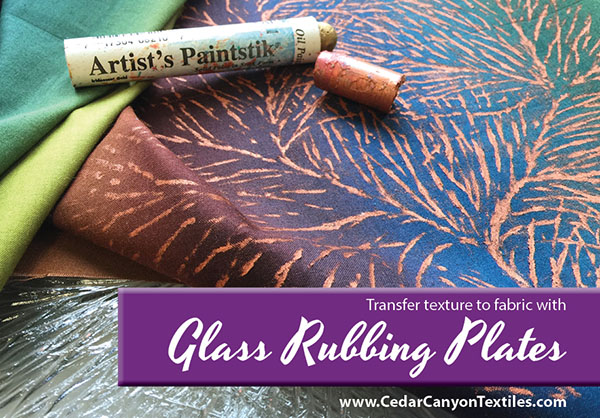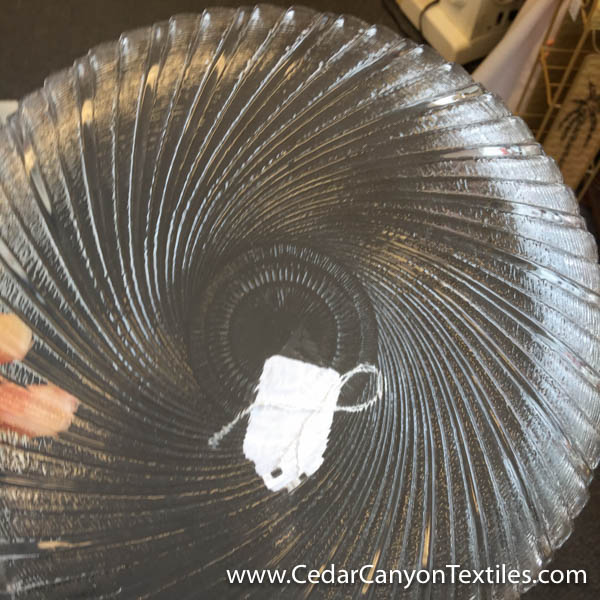Journal
Got Glass Rubbing Plates?

One of my favorite things about working with Paintstik Rubbings (and teaching you to use them!) is that we can make rubbings from just about anything that is reasonably flat and has a texture. Including glass.
[Tweet “See how you can save Grandma’s pie plate on fabric.”]
During one of the recent classes, Kathy Maras had a big challenge. She wanted to make a rubbing from the bottom of her great-grandmother’s pie plate. But, oh my goodness, there is hardly any depth there at all! Was is possible?
Well, here’s proof that it is! Kathy posted her dilemma to the group and several of us chimed in with suggestions. Now I don’t know about you, but I’m totally impressed that she was able to pull such a beautiful rubbing from such a shallow texture.
And that got me thinking about glass rubbing plates. How much of this stuff is out there?
I was running errands a few days later and noticed some baking dishes in the window of a local antique store. On a lark, I popped inside to have a look. I could not believe that the very same image was on the bottom of this baking dish. What are the odds of that happening?
Next, I decided to have a look around to see what else might make an interesting rubbing. This swirl design on the bottom of this plate would be lovely.
And this is a great flower design. I might have to see if I can carve that from a lino block.
There’s that same design again on the bottom of a plate. This must have been very popular during the time these dishes were manufactured.
Here’s another great circular image. Why have I not been looking a dishes all these years???
Now this one got my attention. It’s probably a cake plate. It’s quilt large and the pattern is based on pine boughs. I was intrigued enough to bring this one home with me to see how it might work as a rubbing plate.
First, I used the side of my Paintstik and rubbed lightly over the plate. Hmmm… the back of the plate looked much more detailed than that, but it clearly was not as “flat” as it looked.
I switched to using the end of my Paintstik and was rewarded with a much more detailed design.
All in all, it was a great result to my Glass Rubbing Plate experiment. I don’t think I’ll start collecting bunches of glass objects for making rubbings (that’s an accident waiting to happen!), but it’s pretty cool to know that we can transfer patterns from textured glass to our fabric.
[Tweet “Transfer texture from glass to fabric with Paintstik rubbings.”]
Kathy is excited to use the design from her great-grandmother’s pie plate in a home dec project, and I can’t wait to see it when she’s finished!
Join Me for a Totally Textured Adventure
If you’ve ever been baffled about making Paintstik rubbings – or wondered why the rubbing isn’t turning out the way you expect, I can help!
A new session of my Totally Textured online course is set to kick off on April 4, 2016. I call it my “everything you ever wanted to know about adding texture to fabric with Paintstiks – and more” course. When we’re done, you’ll look a textures like this glass plate an know exactly how to make this work!
If you’re new to Paintstiks or still working to get the hang of Paintstik rubbings, this Skill Builder course is just for you! Click the button below to learn more.











I just love that pine boughs plate. I may start going into antique shops…. 🙂